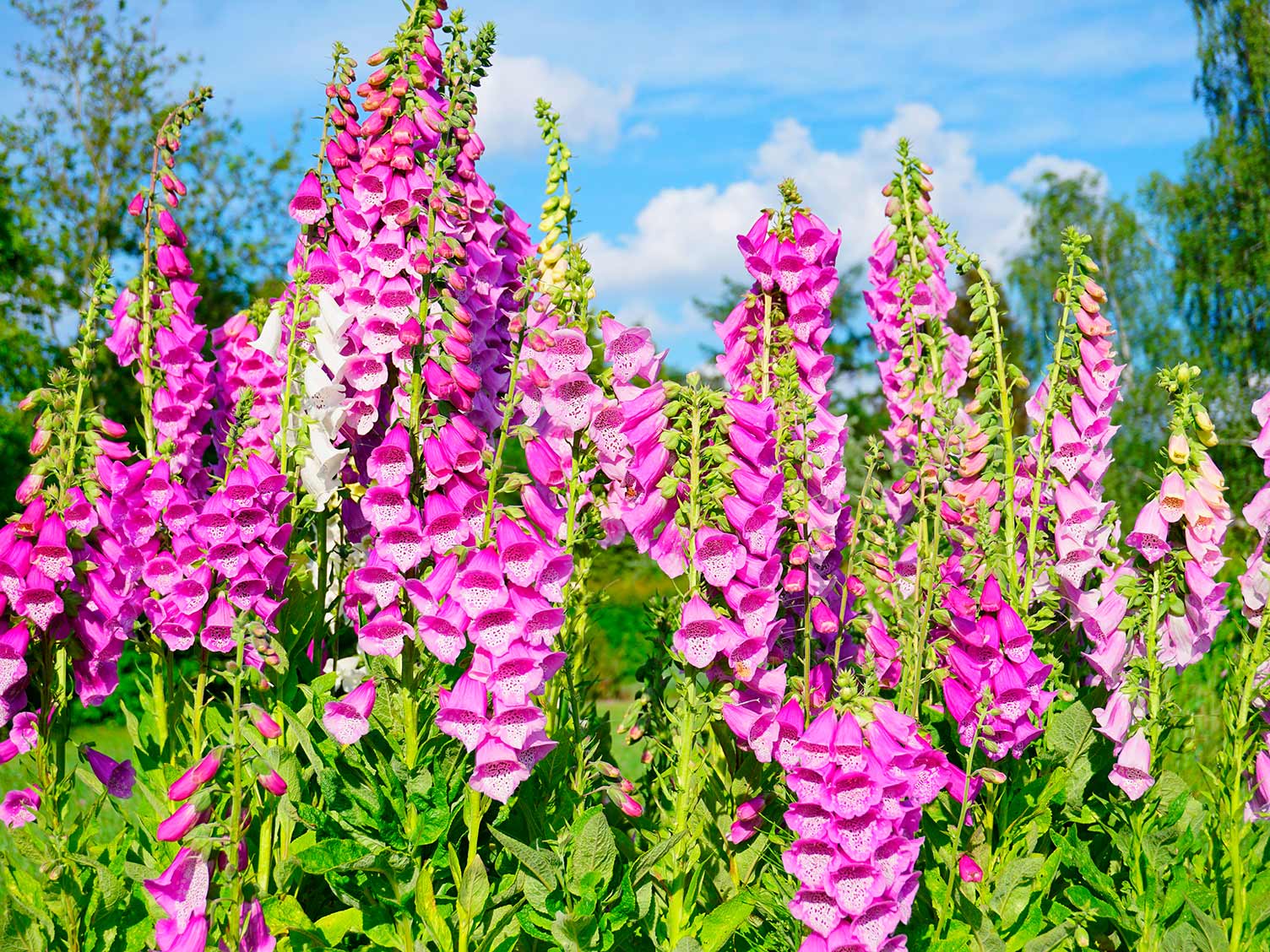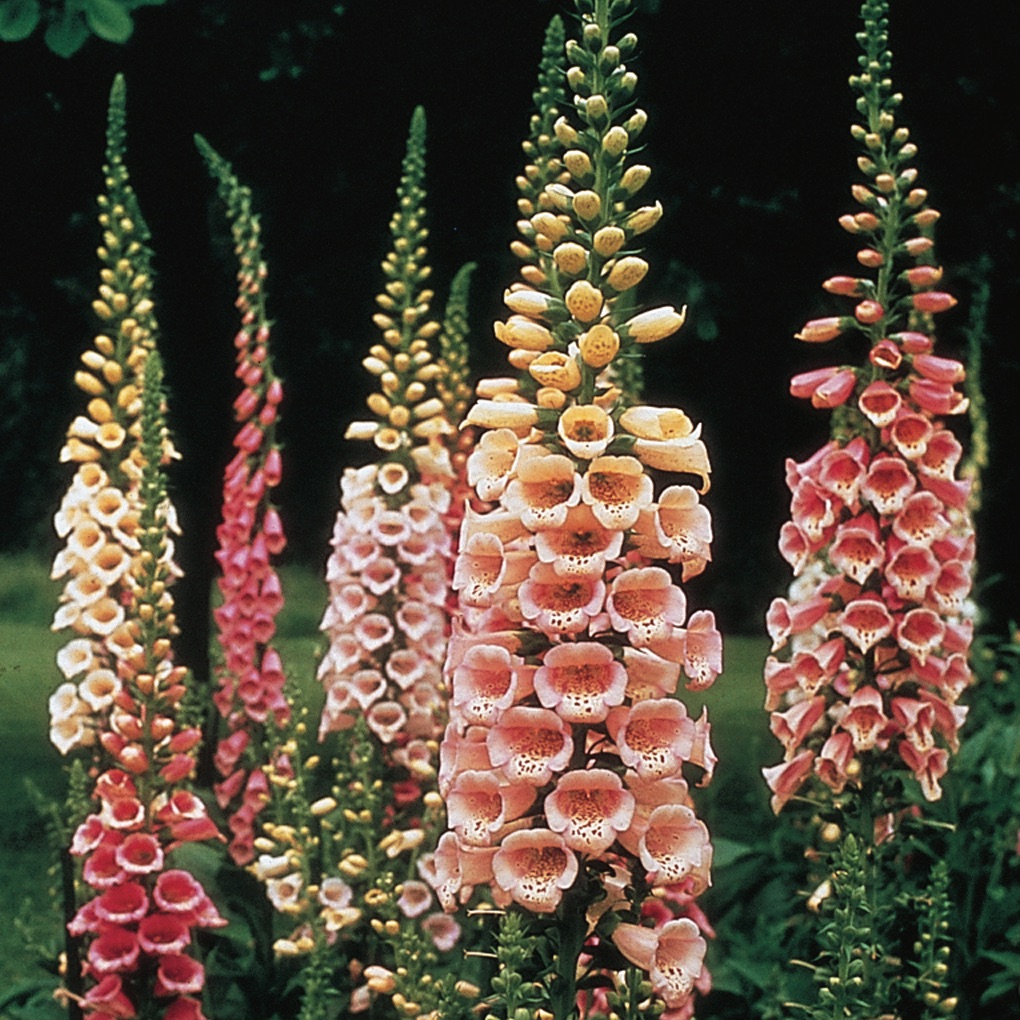Choosing the Right Spot for These Tall Beauties
When it comes to planting foxgloves, selecting the right location is crucial for their success. Foxgloves are tall, stately plants that can grow up to 5 feet in height, making them a stunning addition to any garden. However, their height and spread require careful consideration to ensure they receive the right amount of sunlight, soil quality, and moisture levels. The best place to plant foxgloves is in a location that receives partial shade to full sun, depending on the climate and region. In warmer climates, foxgloves may require more shade to prevent scorching, while in cooler climates, they may thrive in full sun.
In terms of soil quality, foxgloves prefer well-draining soil that is rich in organic matter. They can tolerate a wide range of soil pH, but optimal growth occurs in slightly acidic to neutral soil. When planting foxgloves, it’s essential to choose a location with good air circulation to prevent disease and promote healthy growth. Foxgloves also require consistent moisture levels, especially during their first growing season. Aim to provide about 1-2 inches of water per week, either through rainfall or irrigation.
Considering these factors, the best place to plant foxgloves is often in a location that receives morning sun and afternoon shade, with well-draining soil and consistent moisture levels. By choosing the right spot, you’ll be rewarded with a stunning display of tall, tubular bells in shades of white, pink, and purple. With proper care and attention, foxgloves can thrive in a variety of locations, making them a versatile and beautiful addition to any garden.
How to Create a Foxglove-Friendly Environment
To create an ideal environment for foxgloves to thrive, it’s essential to prepare the soil and surrounding area properly. Foxgloves prefer well-draining soil that is rich in organic matter, so adding compost or well-rotted manure can help improve soil fertility. A pH range of 6.0-7.0 is optimal for foxglove growth, but they can tolerate a slightly wider range.
Fertilization is also crucial for promoting healthy growth and blooming. A balanced fertilizer with a ratio of 10-10-10 (nitrogen-phosphorus-potassium) can be applied in the spring when new growth appears. Avoid over-fertilizing, as this can lead to weak and leggy growth. Mulching around the base of the plants can help retain moisture, suppress weeds, and regulate soil temperature.
When preparing the soil, it’s also important to consider the surrounding area. Foxgloves can grow quite tall, so make sure to provide support using stakes or a trellis to prevent them from toppling over in the wind. Additionally, consider the mature size of the plants and leave enough space between them for good air circulation and growth.
By creating a foxglove-friendly environment, you can help these beautiful plants thrive and enjoy their stunning blooms. Remember to choose the best place to plant foxgloves, taking into account sunlight, soil quality, and moisture levels, and provide the necessary care and attention for optimal growth.
Understanding Foxglove Growth Habits
Foxgloves are biennial plants that grow and bloom in a unique way. In the first year, they produce a rosette of leaves that can grow up to 12 inches in diameter. In the second year, they produce a tall, stately flower spike that can grow up to 5 feet in height. The flower spike is covered in tubular bells that can be white, pink, or purple, and can bloom for several weeks in late spring and early summer.
Understanding the growth habits of foxgloves is essential for determining the best place to plant them. Foxgloves need full sun to partial shade, and well-draining soil that is rich in organic matter. They also need a certain amount of space to grow, as the flower spike can be quite tall and the leaves can spread out quite a bit.
When planting foxgloves, it’s also important to consider their blooming period. Foxgloves typically bloom in late spring and early summer, and the blooming period can last for several weeks. This means that they can provide a beautiful display of color in the garden during this time, but they may also need to be staked or supported to prevent them from toppling over in the wind.
By understanding the growth habits of foxgloves, you can choose the best place to plant them and provide the necessary care and attention for optimal growth. This will help you to enjoy their beautiful blooms and unique growth habit, and to create a stunning display in your garden.
Considering Companion Planting with Foxgloves
Companion planting is a great way to enhance the growth and beauty of foxgloves. By planting complementary plants alongside foxgloves, you can create a stunning display of color and texture, while also improving the overall health and well-being of your plants.
Some good companion plants for foxgloves include lavender, rosemary, and thyme. These plants have similar growing conditions to foxgloves and can help to repel pests and diseases. They also have a similar Mediterranean-style fragrance that can complement the scent of foxgloves.
Other good companion plants for foxgloves include delphiniums, hollyhocks, and sunflowers. These plants have a similar tall, stately growth habit to foxgloves and can create a dramatic display of color and texture in the garden.
When companion planting with foxgloves, it’s also important to consider the mature size of the plants and leave enough space between them for good air circulation and growth. This will help to prevent disease and pests from spreading, and ensure that your plants receive the best possible care.
By considering companion planting with foxgloves, you can create a beautiful and thriving garden that showcases the unique beauty of these plants. Remember to choose the best place to plant foxgloves, taking into account sunlight, soil quality, and moisture levels, and provide the necessary care and attention for optimal growth.
Dealing with Common Challenges in Foxglove Planting
Despite their beauty and elegance, foxgloves can be susceptible to certain challenges that can affect their growth and success. One of the most common challenges is pests, such as aphids, slugs, and snails. These pests can cause damage to the leaves and flowers, and can also spread disease.
To deal with pests, it’s essential to use organic or integrated pest management methods. This can include using neem oil, insecticidal soap, or introducing beneficial insects such as ladybugs or lacewings. It’s also important to maintain good garden hygiene, such as removing weeds and debris, and disposing of infested plants.
Diseases are another common challenge that can affect foxgloves. Powdery mildew, leaf spot, and root rot are some of the most common diseases that can affect these plants. To prevent disease, it’s essential to provide good air circulation, water carefully, and avoid over-fertilizing.
Weather-related issues, such as extreme temperatures, drought, or excessive rainfall, can also affect the growth and success of foxgloves. To deal with these issues, it’s essential to provide protection, such as using row covers or bringing plants under cover during extreme weather conditions.
By being aware of these common challenges and taking steps to prevent or address them, you can help ensure the success and beauty of your foxgloves. Remember to choose the best place to plant foxgloves, taking into account sunlight, soil quality, and moisture levels, and provide the necessary care and attention for optimal growth.
Regional Considerations for Planting Foxgloves
When it comes to planting foxgloves, regional considerations can play a significant role in their growth and success. Different regions have varying climates, soil types, and sunlight patterns that can affect the growth and blooming of foxgloves.
In cooler climates, foxgloves may require more protection from frost and freezing temperatures. In warmer climates, they may require more shade and moisture to prevent scorching and drought. In regions with high winds, foxgloves may require staking or support to prevent them from toppling over.
Soil type is also an important consideration when planting foxgloves. Foxgloves prefer well-draining soil that is rich in organic matter. In regions with heavy clay or sandy soils, foxgloves may require additional amendments to improve soil structure and fertility.
Sunlight patterns also vary by region, and foxgloves require partial shade to full sun, depending on the climate. In regions with intense sunlight, foxgloves may require more shade to prevent scorching, while in regions with limited sunlight, they may require more sun to promote blooming.
By considering regional factors such as climate, soil, and sunlight, you can choose the best place to plant foxgloves and provide the necessary care and attention for optimal growth. This will help ensure that your foxgloves thrive and provide a stunning display of color and beauty in your garden.
Designing a Stunning Foxglove Display
When it comes to designing a stunning foxglove display, the possibilities are endless. Foxgloves are versatile plants that can be used in a variety of garden settings, from formal borders to informal cottage gardens.
One way to create a beautiful foxglove display is to combine them with other plants that complement their height and color. For example, pairing foxgloves with shorter plants like creeping thyme or sweet woodruff can create a stunning contrast in texture and height.
Another way to create a stunning foxglove display is to use them as a focal point in the garden. Planting a group of foxgloves in a prominent location, such as a corner or a entrance, can create a dramatic and eye-catching display.
Foxgloves can also be used to add a pop of color to the garden. Planting them in a container or a hanging basket can create a beautiful and portable display that can be moved around the garden as needed.
In addition to their beauty, foxgloves are also a great choice for gardeners who want to attract pollinators to their garden. Foxgloves are a favorite of bees and other pollinators, and can help to support the local ecosystem.
By incorporating foxgloves into your garden design, you can create a stunning and unique display that showcases the beauty of these plants. Remember to choose the best place to plant foxgloves, taking into account sunlight, soil quality, and moisture levels, and provide the necessary care and attention for optimal growth.
Maintenance Tips for Healthy and Thriving Foxgloves
To keep foxgloves healthy and thriving, regular maintenance is essential. One of the most important things to consider is watering. Foxgloves prefer well-draining soil and should be watered regularly, but not excessively. Overwatering can lead to root rot and other problems.
Pruning is also an important part of foxglove maintenance. After the blooming period, the flower stalks should be cut back to encourage new growth and prevent the plant from becoming leggy. Deadheading, or removing spent flowers, can also help to promote new blooms and keep the plant looking its best.
Fertilization is another important aspect of foxglove maintenance. Foxgloves are heavy feeders and benefit from regular fertilization. A balanced fertilizer should be applied in the spring and again after the blooming period to promote healthy growth and blooming.
Finally, it’s essential to keep an eye out for pests and diseases that can affect foxgloves. Regularly inspect the plants for signs of pests or diseases, and take action quickly if you notice any problems.
By following these maintenance tips, you can help to keep your foxgloves healthy and thriving. Remember to choose the best place to plant foxgloves, taking into account sunlight, soil quality, and moisture levels, and provide the necessary care and attention for optimal growth.



/tall-toxic-foxglove-plants-2132588_01-2d0fe8dcb23d45d399b2ecfebd5761b2.jpg)




:max_bytes(150000):strip_icc()/best-plants-for-dry-shade-4767378-hero-5ce3e9e8ed2b485ab0314e21ce8df693.jpg)